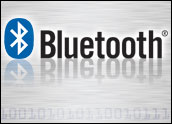
Oracle’s takeover bid for competitor PeopleSoft — which dominated trade press headlines during the dog days of summer — has somewhat obscured the company’s technology rollout strategy. But that’s about to change.
This week at the OracleWorld 2003 conference in San Francisco, the database giant has revealed more information about its long-heralded software upgrade, Oracle 10i, which most in the industry are now calling 10g because of its purported ability to tap into grid-computing technology. Oracle has released some details about the next-generation software but so far remains tight-lipped about availability, pricing and technology specifics.
Although the company pitched its vision of grid computing at the conference, executives did not give a firm release date for 10g, which will ship later this year, or say how much it will cost. Considered a major upgrade from Oracle 9i, the company’s current database software, Oracle 10g is said to offer customers improved manageability, enhanced capacity, increased clustering support and support for extensible markup language (XML).
“We’re very focused,” said Safra Catz, executive vice president at Oracle, during an analyst teleconference. “We’re focused on giving customers a fully integrated and easy-to-manage product. You will see that with 10i.”
Scalability Upgrade
By most accounts, the scalability of Oracle’s database software will be dramatically improved in 10g. The new package will increase the amount of data that the application can be aware of at any one time to eight exabytes, or eight million terabytes. (One terabyte is equivalent to 1,024 gigabytes.) According to most analyst estimates, the new software will make Oracle competitive for even the largest data warehouse projects.
The speed of the new database has been dramatically improved — and verified. Late last year, the Redwood Shores, California-based company released a new single-server benchmark record with a beta version of the new software — but then lost the benchmark council’s imprimatur because the commercial version of the software was not yet available.
The company also is planning to introduce a new database browser — iSQL Plus — as a replacement for the Windows SQL Plus browser used in the 9i product. In addition, Oracle is replacing its Oracle Names feature with a new directory-naming feature that will rely on the lightweight directory access protocol (LDAP).
Market Share
Another of the software’s most dramatic new features — designed to address the concerns of critics who for years have complained about the difficulty associated with integrating Oracle — is that it is designed to be installed in 30 minutes or less, according to the company.
To make sure customers start buying the new software, Oracle plans to discontinue customer support for its older database models in December 2008. Many companies have gotten a head start. According to Ravi Bagal, director of marketing at Tomax Corporation, a retail software vendor, his company already is using a beta version of the new database.
The new software may help Oracle keep its market lead in this brutally competitive niche of the software world. Oracle database software — in various iterations — has a 39.4 percent share of the market and has stayed ahead of IBM’s DB2 and Microsoft SQL Server for five straight years, according to IDC’s database market share report.
By contrast, IBM’s share of that market is 33.6 percent, and Microsoft’s is 11.1 percent. Oracle’s market share is even bigger with the Fortune 100 companies — 93 percent, according to a usage survey by Fact Point. The company’s databases are used quite heavily in enterprise resource management projects — 54 percent of all such projects in the United States — according to AMR Research.
Beta Users
While exact details of the new database remain sealed behind nondisclosure agreements, this week the company revealed certain information about its beta customers. For example, BioMed Central, CERN and Ordnance Survey all are using the database to process huge amounts of data.
According to Oracle, more than 100 customers from around the world have worked with it to test and provide direction for Oracle 10g, including Amazon, Colgate Palmolive, Deutsche Post IT Solutions, Digex, Nemmco, Qualcomm, PCI Geomatics and Wellcome Trust Sanger Institute.
BioMed Central is a biomedical research publisher that allows free access to the bioinformatics research it publishes. The organization publishes peer-reviewed research articles that are rich in graphics, video content and text. It is using the database to make it easier for scientists to manage the publishing process.
“At BioMed Central we are using Oracle 10g manageability features, together with its XML and rich-media capabilities, to deliver Web tools that allow scientists to perform tasks such as manuscript submission, document tracking, peer review and editorial decision-making,” said Matthew Cockerill, technical director at BioMed Central Limited.
Grids and Maps
Meanwhile, CERN, the European Organization for Nuclear Research, is creating one of the world’s most powerful particle accelerators, called the Large Hadron Collider (LHC). The accelerator will be used to answer some of the most fundamental questions of science and, as a result, the computing requirements are enormous.
This project has staggering data storage requirements, with projections of more than 10 petabytes of data being generated annually. (One petabyte is equivalent to 1,024 terabytes.) To address these needs, CERN became an early adopter of Oracle’s new database.
“With Oracle 10g’s focus on grid computing, we hope to ease deployment, management and clustering of data for our worldwide computing grid project,” said Jamie Shiers, database group lead in the IT division at CERN.
Britain’s Ordnance Survey, much like CERN, has massive data-processing requirements. The company manages one of the world’s largest, most sophisticated civilian-mapping operations, providing access to up-to-date geographic and topographic information covering Great Britain. Ordnance Survey has more than 430 million topographic features stored in a single seamless database.
“Ordnance Survey manages nearly a terabyte of data in Oracle Spatial,” said Ed Parsons, chief technology officer of Ordnance Survey. “We’ve found no other database that can meet our requirements.”
Partner Network
Oracle is planning a “partner initiative” designed to provide the opportunity for the company’s largest database users to apply for early access to the new database. Partners selected for this option will receive Oracle software and documentation four to six weeks earlier than the general public.
Once partners become technically enabled on Oracle 10g infrastructure software, they can access marketing and sales training, tools and kits that will assist in delivering their product or service. Oracle 10g partners also will be invited to participate in a variety of marketing activities with Oracle.
“As our products roll out, we will provide all the technical resources our partners require to fully leverage the power of Oracle 10g,” said Julie Tung, vice president of Oracle’s partner network.
PeopleSoft Takeover
Some observers note that if Oracle continues to pursue its acquisition strategy — and purchase PeopleSoft — the move will force a change in technology for many in the user community. But this shift, by most analyst estimates, won’t come without costs and consequences. At worst, current PeopleSoft users could sour on Oracle technolgy and might look elsewhere for their software needs.
“Larry Ellison, founder and CEO of Oracle, has been reported as saying that he is not interested in continuing the PeopleSoft product line,” Edward Hansen, a partner in the New York law firm of Shaw Pittman, told TechNewsWorld.
“But he wants to buy the customer base,” said Hansen, whose firm specializes in ERP issues. “Presumably, this will mean PeopleSoft customers will have to switch to an Oracle technology when it is upgrade time — and switching to a different technology always means more cost and more risk.”
Eclipsing the company’s technology strategy over the past several months, Oracle’s takeover bid of PeopleSoft was brought once again to the forefront as Oracle announced last week that it had extended its previously announced offer for all of the common stock of PeopleSoft to midnight on October 17, 2003.
“PeopleSoft’s plan means confusion and execution risk for customers and shareholders,” said Jim Finn, Oracle’s spokesperson. “Oracle believes that its fully financed, all-cash offer for PeopleSoft represents the better plan for PeopleSoft shareholders and customers.”
The tender offer was previously set to expire at midnight on September 19, 2003. As of the close of business last week, approximately 38,718,737 shares had been tendered in and not withdrawn from the offer.




















































